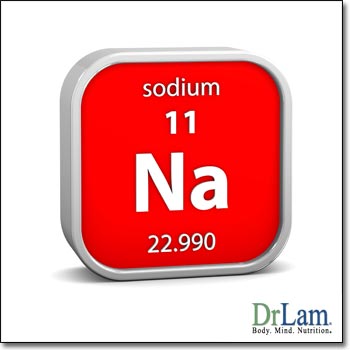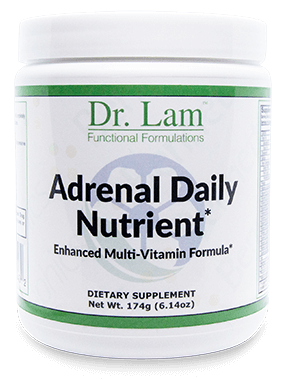
 If you find that you’re only comfortable when the temperature is within a narrow range, and find yourself feeling hot or cold outside of that range, if you can’t stand to leave the house without sunglasses, or if your hands and feet are typically cold, regardless of ambient temperature, you may be suffering from advanced adrenal fatigue. Sensitivities to temperature and bright light, especially sunlight, are common advanced Adrenal Fatigue symptoms. Many people in our coaching progam have similar issues.
If you find that you’re only comfortable when the temperature is within a narrow range, and find yourself feeling hot or cold outside of that range, if you can’t stand to leave the house without sunglasses, or if your hands and feet are typically cold, regardless of ambient temperature, you may be suffering from advanced adrenal fatigue. Sensitivities to temperature and bright light, especially sunlight, are common advanced Adrenal Fatigue symptoms. Many people in our coaching progam have similar issues.
Most healthy people are fine in the sun and typically only use sunglasses for safety reasons, such as to improve visibility while driving, while those with adrenal fatigue, especially in advanced stages, may have an adrenal crash after more than a few minutes in the sun, especially while driving. Most healthy people find a warm bath or shower to be relaxing, while those with adrenal fatigue will find the same bath or shower to be taxing. It may seem counterintuitive to a healthy person that something as innocuous as sunshine, or as relaxing as a warm bath could have such a detrimental effect on someone whose adrenals are not so healthy, but these complaints are actually quite common. Proper nutrition may also help with recovery, as we discuss on the Dr. Lam Coaching nutritional program.
So why are people with adrenal fatigue so sensitive to temperature? To answer that question, it is important to understand how the body regulates its temperature.
Temperature regulation occurs through a continuous process known as thermoregulation. The body generates and disperses heat through a variety of biological processes, and thermoregulation is a delicate balance between gaining and losing heat so that the body’s internal temperature, or core temperature, remains more or less consistent, between 36.5 and 37.5 degrees Celsius (97.7 to 99.5 degrees Fahrenheit), regardless of the surrounding temperature. The process begins with thermoreceptors in the skin that detect heat or lack of heat (cold). These thermoreceptors send signals to the hypothalamus, which responds accordingly to ensure the core temperature remains constant.
When it is cold, the body responds by working to conserve heat. It does this in a number of ways. First, sweat production is decreased and the pores of the skin tighten and close. Second, tiny muscles under the skin contract to make the hair stand up, trapping air for insulation. Third, the blood vessels constrict, directing blood flow away from the extremities, retaining as much heat as possible in the body’s core. This is why hands and feet are the first to feel cold, and the first to be affected by frostbite. As the temperature drops further, the hypothalamus stimulates the muscles to generate additional heat through shivering. Finally, the cells may begin to burn brown fat, which increases the overall body temperature. Newborns and animals that hibernate in winter have more brown fat than other mammals.
 When it is hot, the body responds by reducing the amount of heat generated and dissipating as much heat as possible. First, the muscles under the skin that cause the hair to stand up relax, so those hairs lie flat against the skin, preventing air from being trapped against the body. Second, the blood vessels dilate, allowing more blood to reach the capillaries near the skin, where the heat can be dispersed. Third, sweat glands are activated, and the pores are opened, secreting moisture that carries electrolytes and cools the body through evaporation. These processes function more effectively in hot, dry conditions than in humid conditions.
When it is hot, the body responds by reducing the amount of heat generated and dissipating as much heat as possible. First, the muscles under the skin that cause the hair to stand up relax, so those hairs lie flat against the skin, preventing air from being trapped against the body. Second, the blood vessels dilate, allowing more blood to reach the capillaries near the skin, where the heat can be dispersed. Third, sweat glands are activated, and the pores are opened, secreting moisture that carries electrolytes and cools the body through evaporation. These processes function more effectively in hot, dry conditions than in humid conditions.
These processes are largely governed by the hypothalamus, the thyroid, and the adrenal glands, all of which are closely linked. As the adrenal glands become depleted, they become unable to cope with the body’s demands, and the hypothalamus also finds it difficult to continue functioning optimally, making it difficult for the body to maintain the proper core temperature. Maintaining core temperature when it’s hot or cold taxes the hypothalamus, which in turn strains the adrenal glands, aggravating adrenal fatigue symptoms.
The Dr. Lam Coaching program is designed to help with adrenal fatigue recovery no matter the stage of the condition.
Adrenal fatigue interferes with the ability of the hypothalamus to respond to changes in temperature. This is why, if someone with adrenal fatigue tries to go into a sauna, enjoy a warm bath or shower, or relax in the sun, this causes stress on the hypothalamus, which then stresses the adrenals and may lead to a crash. In advanced stages of adrenal fatigue, the heat will trigger the blood vessels to dilate, just as in a healthy individual, but the blood may then pool in the extremities, away from the brain, resulting in more fatigue. It can also increase detoxification, which, if too strong, can also lead to a crash.
 Adrenal fatigue tends to compromise the feedback loops necessary for the hypothalamus to function normally and regulate temperature. There are several mechanisms at work here, including dehydration, inability to retain and utilize fluid effectively, low sodium levels, electrolyte imbalances, and other problems that result in inability to effectively regulate temperature. Dehydration and electrolyte imbalances interfere with sweat production, while staying hydrated by drinking plenty of water can dilute the blood and other bodily fluids, further aggravating electrolyte imbalances. Electrolyte imbalances trigger salt cravings, which are very common in people with adrenal fatigue. To help resolve this, you can increase salt intake. Though be careful if you have high blood pressure or any other cardiac conditions.
Adrenal fatigue tends to compromise the feedback loops necessary for the hypothalamus to function normally and regulate temperature. There are several mechanisms at work here, including dehydration, inability to retain and utilize fluid effectively, low sodium levels, electrolyte imbalances, and other problems that result in inability to effectively regulate temperature. Dehydration and electrolyte imbalances interfere with sweat production, while staying hydrated by drinking plenty of water can dilute the blood and other bodily fluids, further aggravating electrolyte imbalances. Electrolyte imbalances trigger salt cravings, which are very common in people with adrenal fatigue. To help resolve this, you can increase salt intake. Though be careful if you have high blood pressure or any other cardiac conditions.
Another mechanism that can interfere with thermoregulation is dehydration. In healthy individuals, dehydration causes thirst when the body loses as little as two percent of its fluid volume. Unfortunately, cell damage begins to occur at fluid loss as low as one percent well before thirst sets in. Individuals with adrenal fatigue tend to be far more sensitive to changes in fluid levels than healthy individuals. Unfortunately, the medical community pays little attention to fluid imbalances until the problem becomes severe. Dehydration can produce symptoms while lab tests still show fluid levels well within normal limits.
Because fluid and electrolytes are so critical to thermoregulation, let’s take a closer look at just how the body manages fluid and electrolyte levels. Fluid in the body is either intracellular – located within the cells – or extracellular – located between the cells and in other areas outside the cells, such as the digestive tract. About two-thirds of the fluid is intracellular, but fluid is able to move freely into and out of the cells through a process known as osmosis. Osmosis is influenced by the amount of electrolytes and dissolved minerals in the cells. Fluid balance occurs when there is adequate fluid both inside and outside the cells. Most of the fluid in our bodies is taken in from what we eat and drink, while some is produced as we metabolize nutrients.
When fluid intake exceeds output, the kidneys are triggered to excrete the excess. As fluid output exceeds fluid intake, the hypothalamus detects changes in the blood passing through it and responds by causing feelings of thirst, and the posterior pituitary gland and adrenals release hormones that stimulate the kidneys to reabsorb fluid from urine. When the pituitary gland does not produce enough ADH, excessive fluid is lost through urine, causing increased thirst, a common problem in those with diabetes, but is typically not an underlying cause of thirst in those with adrenal fatigue. As fluid moves out of the blood vessels, blood pressure drops, sometimes dangerously low. This can happen when there is not enough salt or electrolytes in the blood stream to maintain fluid levels in the blood vessels.
 The other hormone responsible for fluid balance is aldosterone, a mineralocorticoid produced by the adrenal glands. When aldosterone is released, the kidneys promote absorbing sodium. Because the body needs a certain amount of fluid to dilute sodium, as the body holds onto sodium, it will also hold onto water. In a healthy individual, when sodium levels are low and blood pressure begins to dip, the adrenal glands produce aldosterone so that sodium levels increase and thus blood pressure also rises. In a person with adrenal fatigue, however, the adrenal glands are unable to produce enough aldosterone to maintain sodium levels. The drop in sodium levels causes a drop in blood volume, which causes a drop in blood pressure. In a person with adrenal fatigue, the body responds with intense salt cravings in an attempt to compensate.
The other hormone responsible for fluid balance is aldosterone, a mineralocorticoid produced by the adrenal glands. When aldosterone is released, the kidneys promote absorbing sodium. Because the body needs a certain amount of fluid to dilute sodium, as the body holds onto sodium, it will also hold onto water. In a healthy individual, when sodium levels are low and blood pressure begins to dip, the adrenal glands produce aldosterone so that sodium levels increase and thus blood pressure also rises. In a person with adrenal fatigue, however, the adrenal glands are unable to produce enough aldosterone to maintain sodium levels. The drop in sodium levels causes a drop in blood volume, which causes a drop in blood pressure. In a person with adrenal fatigue, the body responds with intense salt cravings in an attempt to compensate.
The adrenal glands are part of the cardionomic circuit in the Neuroendometabolic (NEM) Stress Response. Under chronic stress, the body tends to not only affect the adrenals, but many other organs and systems at the same time, producing many different symptoms. Salt cravings, blood pressure fluctuations, and abnormal thermal regulations are symptoms of an abnormal cardionomic circuit, which consists of the adrenals, the heart, and the autonomic nervous system (ANS). We’ve already read that the adrenals play a big part in producing aldosterone, which controls fluid levels. The heart and ANS are also important in that they play big roles in blood pressure regulation, which indirectly affects the circulation and blood flow that disperse heat. Getting control of stress will not only help symptoms of adrenal fatigue, but improve your whole body’s response to negative tension.
 In a healthy individual, all of these processes occur continuously. These processes work to help people function in the sunshine and in a moderate range of temperatures. The important thing to remember is that the symptoms of adrenal fatigue are the body’s attempts to compensate for inadequate adrenal function. So as the adrenal glands become depleted, the body loses the ability to thermoregulate or have proper fluid balance, and the individual begins to be uncomfortably warm at lower temperatures, and uncomfortably cold at warmer temperatures. Likewise, as the adrenal glands lose the ability to produce adequate aldosterone to regulate sodium levels, the individual experiences intense cravings for salt. In early stages of adrenal fatigue, these symptoms may be mild or barely noticeable, becoming more troublesome as the adrenal glands become more depleted and adrenal fatigue becomes more advanced.
In a healthy individual, all of these processes occur continuously. These processes work to help people function in the sunshine and in a moderate range of temperatures. The important thing to remember is that the symptoms of adrenal fatigue are the body’s attempts to compensate for inadequate adrenal function. So as the adrenal glands become depleted, the body loses the ability to thermoregulate or have proper fluid balance, and the individual begins to be uncomfortably warm at lower temperatures, and uncomfortably cold at warmer temperatures. Likewise, as the adrenal glands lose the ability to produce adequate aldosterone to regulate sodium levels, the individual experiences intense cravings for salt. In early stages of adrenal fatigue, these symptoms may be mild or barely noticeable, becoming more troublesome as the adrenal glands become more depleted and adrenal fatigue becomes more advanced.
So if you’ve noticed that it takes a little more salt to make your food taste good, that you are feeling a little warmer or cooler than the people around you, or that you can’t tolerate the sun as well as you used to, there is a very good chance you are starting to experience more than mild adrenal fatigue. The time to start addressing the problem is now, because these symptoms are only going to become more pronounced as adrenal fatigue advances. The interesting part of all this is that it’s easy to determine how depleted the adrenal glands are by how intense these symptoms are.
The good news is that these symptoms tend to diminish as the adrenal glands recover. As people recover from adrenal fatigue, they become better able to tolerate warmer and cooler temperatures; they are able to get out and enjoy the sunshine, to relax in a warm bath or sauna, and to enjoy food with less salt. This will not happen all at once, however. Again, it’s easy to gauge how well a person is recovering from adrenal fatigue by the difference in symptoms. So if you find that are only comfortable when the temperature is within a two to three degree range, as you recover, you may notice that your comfort range expands to four or five degrees, then to six or seven degrees, and so on. Many people on our nutritional recovery program find that correct dietary changes help exacerbate recovery.
If at the height of your adrenal fatigue, you can barely stand to walk in the sun from your house to your car, you may soon notice you can sit out on your porch for a couple of minutes, then you can tolerate five minutes, then ten, and so on, until you can really enjoy the sunshine. Those who are in advanced stages of AFS may find the body’s temperature regulation apparatus under perform for a long period of time. The weaker the body, the slower the recovery and the more turbulent it can be. There may be days one can be exposed to the sun more, while other days are much less.
 The thing to remember is that energy levels alone are only one component of adrenal fatigue. It’s possible to improve energy levels and feel like the adrenal fatigue is getting better, but not have any change in these symptoms. If you do notice your energy levels increasing, but your tolerance remains unchanged, you may not actually be recovering, but may only be masking an underlying issue. The body's capacity to tolerate temperature variations is another indicator of adrenal function.
The thing to remember is that energy levels alone are only one component of adrenal fatigue. It’s possible to improve energy levels and feel like the adrenal fatigue is getting better, but not have any change in these symptoms. If you do notice your energy levels increasing, but your tolerance remains unchanged, you may not actually be recovering, but may only be masking an underlying issue. The body's capacity to tolerate temperature variations is another indicator of adrenal function.
These symptoms of adrenal fatigue can be quite problematic, especially in the advanced stages of the problem. They should also not be ignored. Understanding the physiology behind the symptoms makes you more aware of what is going on with your body. Making sure to talk to a knowledgeable provider who can help you regulate your temperature by going to the root of the problem is the key to long-term recovery success.
Poor temperature regulation is one of the most common adrenal fatigue symptoms. Unfortunately, it can be very difficult to manage if you live in an area that experiences a wide range of temperatures. But you can't completely avoid this experience, which means that you need to learn how to manage it to avoid adrenal crashes. Here's how:
If you suddenly find that your body is less tolerant of outside temperatures, it may be a sign that your adrenal fatigue is getting worse. You need to address this before the situation becomes severe. For help with this, give our team a call for a FREE** health consultation.
In our coaching program, we help you identify the root cause of your problem and assist in the formulation of a recovery program suited to your specific needs. Remember, each person is different. Causes of the condition differ as does the stage of the condition which you are at. Your recovery program may thus be greatly different from someone else who also suffers from adrenal fatigue.

Adrenal Daily Nutrient: Comprehensive Blend for Optimal Adrenal Function